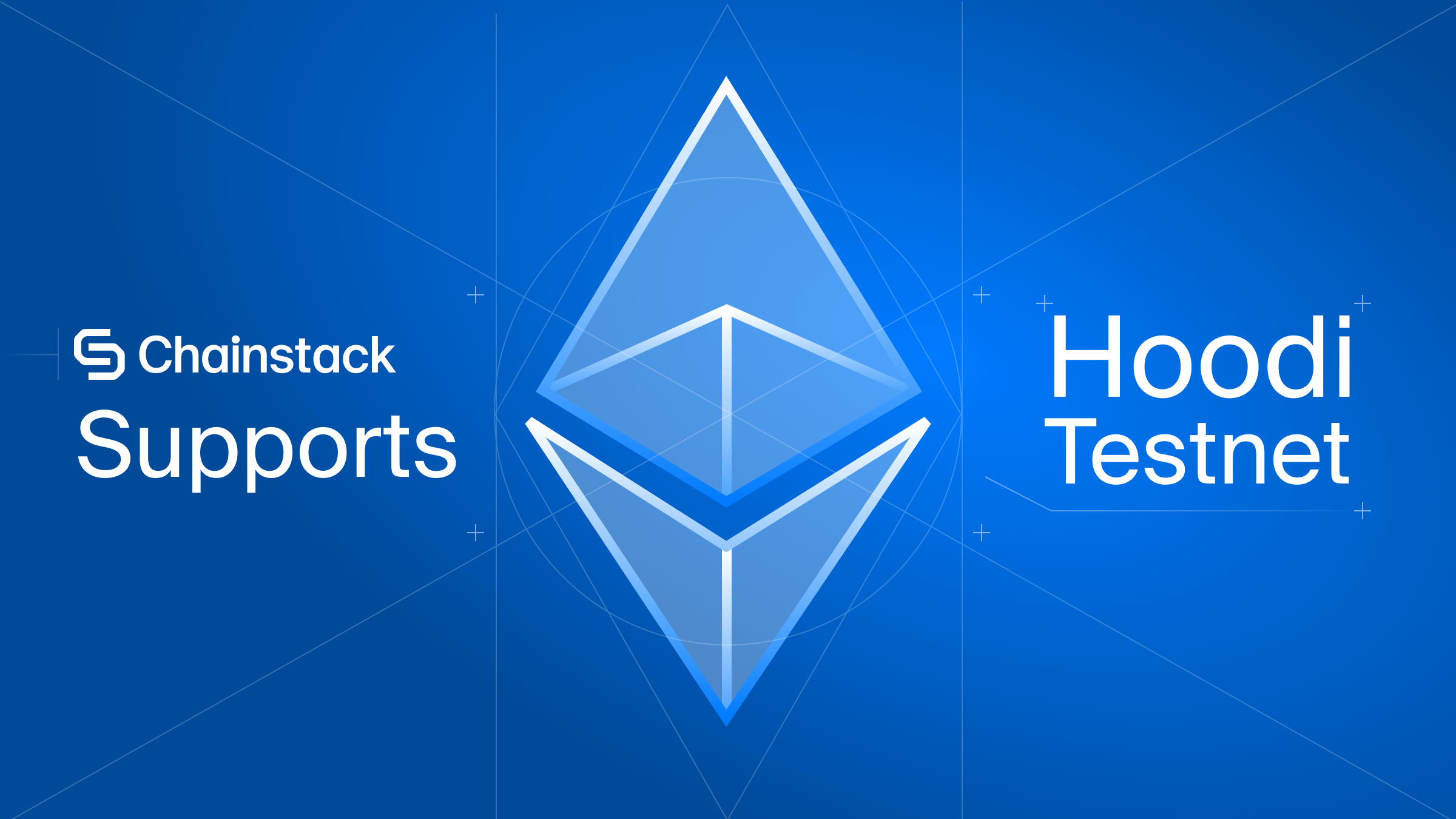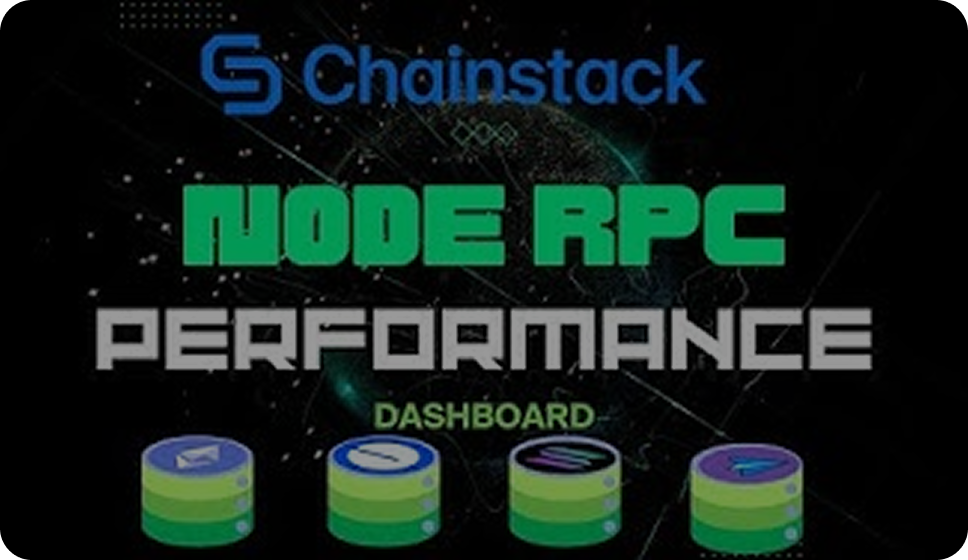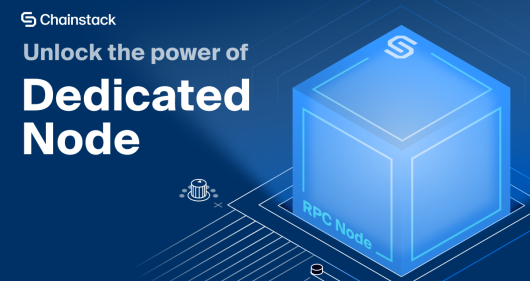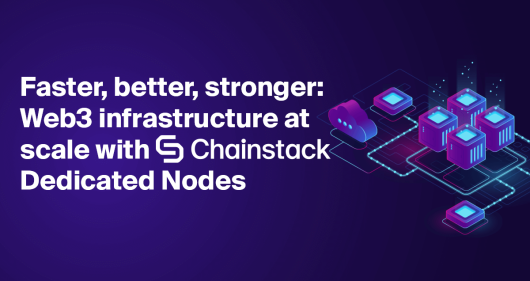Crypto Wallets 101: What is a smart contract wallet?
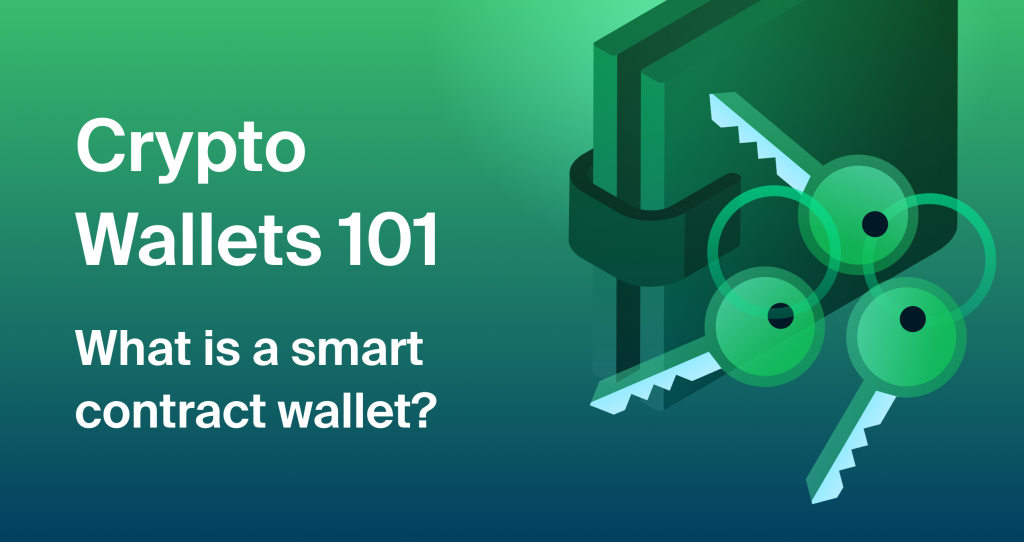
Meet smart contract wallets, the key to unlocking a host of innovative features for managing your crypto assets. As the cryptocurrency landscape continues to grow and blockchain technology becomes increasingly integrated into our daily lives, smart contract wallets have emerged as essential tools for protecting and streamlining digital asset management.
So, what is a smart contract wallet?
Imagine being able to bundle transactions, customize your recovery options, pay gas fees with non-native tokens, and maintain your privacy**—**all within a single wallet!
Smart contract wallets are transforming how we engage with cryptocurrencies and blockchain networks by harnessing the power of self-executing agreements, known as smart contracts, to deliver more secure, flexible, and user-friendly solutions.
Though not every smart contract wallet eliminates externally owned accounts (EOAs), the future offers promising possibilities. Now we have ERC-4337, an account abstraction approach seeking to liberate users from centralized relayers and EOAs. This approach could establish a universal standard addressing security concerns, but it necessitates further infrastructure development.
Join us as we delve into the realm of smart contract wallets and uncover their crucial role in the rapidly evolving digital economy and the expansive Web3 ecosystem.
What are smart contract wallets?
A smart contract wallet is a decentralized application (DApp) built on a blockchain that enables users to manage their digital assets using smart contract technology. These contracts are self-executing, programmable scripts that automatically enforce the terms and conditions of an agreement. This functionality offers users higher control and security than traditional wallets, as smart contracts enable unique features like multisig, access controls, and customizable transaction logic.
Some of the key benefits of using a smart contract wallet include the following:
1. Enhanced security: Smart contract wallets utilize blockchain technology and encryption protocols to protect users’ assets from theft or unauthorized access. For example, a user’s private key is securely stored and encrypted within the wallet, making it extremely difficult for hackers to access the user’s funds.
2. Customizable features: Smart contracts enable advanced functionality, such as multisig transactions, spending limits, and programmable rules, which can be tailored to users’ needs. For instance, a user can set a daily spending limit to mitigate the risk of excessive or unauthorized transactions.
3. Decentralization: Unlike traditional wallets that rely on a centralized authority, smart contract wallets leverage the power of decentralization, reducing the risk of single points of failure and censorship. This can be exemplified by a decentralized exchange (DEX) wallet that allows users to trade tokens directly from their wallets without needing a centralized exchange’s approval or intervention.
4. Transparency and auditability: All transactions and smart contract codes are recorded on the blockchain, accessible and verifiable by anyone, fostering trust and confidence in the system. For example, if a user suspects fraudulent activity, they can quickly verify their transaction history on the blockchain to confirm the accuracy of their wallet’s records.
Smart contract wallet examples
Some popular smart contract wallets include InstaDApp, Zerion, Poketto Cash, Argent, and Braavos. These wallets offer you various features such as borrowing, lending, token swapping, liquidity provision, interaction with decentralized applications (DApps), instant payments, and integration with decentralized exchanges. Some also provide user-friendly interfaces, low fees, and support for non-fungible tokens (NFTs), making them popular choices among users in the crypto space.
Practical use cases for smart contract wallets include:
Secure asset management: Individuals and organizations can use smart contract wallets to manage their digital assets securely, leveraging features like multisig and customizable access controls. For example, a company can use a smart contract wallet to ensure that only authorized personnel can access and manage its digital assets, providing an additional layer of security.
Collaborative decision-making: Teams, companies, or groups can use smart contract-based wallets to ensure that spending decisions are made collectively, fostering transparency and accountability. As an illustration, a non-profit organization can use a multisig smart contract wallet to require multiple board members’ approval before releasing funds, ensuring the decision-making process is more democratic and transparent.
Access to DeFi services: Users can use smart contract wallets’ integration capabilities to access various DeFi platforms, allowing them to participate in decentralized finance (DeFi) directly from their wallets. For instance, users can link their smart contract wallet to a decentralized lending platform, allowing them to lend or borrow assets without relying on a traditional financial institution.
What are multi-signature smart contract wallets?
Multisig, short for multi-signature, refers to a smart contract-based wallet requiring multiple parties’ approval before a transaction can be executed. A multisig wallet operates on the principle of “m-of-n” signatures, meaning that “m” out of the “n” designated signatories must approve a transaction before it can be processed. The value “n” represents the total number of designated signatories, each possessing a unique private key for approving transactions.
The higher the “n” value, the more distributed and secure the wallet becomes. Meanwhile, the value “m” denotes the minimum number of signatures these signatories require to authorize and execute a transaction. An “m-of-n” multisig wallet necessitates at least “m” signatures out of the “n” signatories for a transaction to be deemed valid, with “m” ranging from 1 to the total number of signatories (“n”).
For example, a 2-of-3 multisig wallet would involve three signatories (n = 3) and require at least two of them (m = 2) to approve a transaction before it can be processed. In this configuration, any two of the three signatories must provide their signatures using their private keys for the transaction to be executed.
Multi-signature smart contract wallets utilize smart contracts to enforce multi-signature schemes, requiring numerous signatures for transactions, providing an extra layer of security, and making them especially resistant to hacks.
The role of multi-signature smart contracts in Web3
In the Web3 ecosystem, multi-signature smart contracts are essential in enhancing security and control over digital assets, ensuring that a single individual cannot make unilateral decisions or take actions without the consent of other designated parties.
One of the top benefits of multi-signature smart contracts is their enhanced security which reduces the risk of theft or unauthorized access, as numerous approvals are required before a transaction can be processed. Another is the higher level of control they deliver by involving multiple parties in the governance process, helping distribute ownership, and reducing the risk of single points of failure.
Thanks to their high degree of customizability, users can tailor the parameters of the multi-signature smart contract to meet their specific needs, such as setting the number of required signatures or establishing a hierarchy of permissions. Additionally, multi-signature smart contracts encourage accountability and transparency among participants. All actions are recorded on the blockchain and can be audited by anyone, providing clear insight into decision-making processes.
Use cases for multisig wallets
Multisig wallets are useful for a wide range of personal and business applications that require the utmost security, including:
Collaborative organizations or teams: Businesses, non-profits, or other groups can use multisig wallets to ensure that any spending decisions require consensus, reducing the risk of fraud or unauthorized transactions.
Escrow services: Multisig wallets can act as intermediaries for secure transactions between buyers and sellers, where the release of funds depends on the approval of all involved parties.
Personal security: Users who want to reduce the risk of asset loss due to theft or mismanagement can distribute the required signatures among trusted peers.
Pros of multisig wallets
1. Enhanced security: By requiring consensus before key actions, multisig wallets minimize the risk of unauthorized access, making it more difficult for bad actors to steal your funds.
2. Accountability: The need for multiple approvals helps promote transparency and accountability among wallet users, ensuring that your spending decisions are made collectively.
3. Backup and recovery: Since the required signatures can be distributed among trusted individuals, the risk of losing access to your wallet due to mishandling a single private key is minimized.
Cons of multisig wallets
1. Complexity: Setting up and managing multisig wallets can be more complex than traditional crypto wallets, which might deter some users.
2. Coordination: As multisig wallets require approvals from multiple parties, transactions can take longer to process, especially if the involved parties are in different time zones or have conflicting schedules.
3. Compromised signatories: If one or more signatories become unresponsive, compromised, or disreputable, it can become difficult to execute transactions or recover funds.
How do multisig wallets work?
Using a typical multisig wallet smart contract involves the following steps:
1. Wallet creation: The wallet owner deploys a smart contract specifying the number of required signatures (m) and the designated signatories (n).
2. Funding the wallet: Users deposit funds into the wallet’s smart contract address.
3. Proposing a transaction: When a transaction needs to be executed, one of the signatories creates a transaction proposal, specifying the recipient address, amount, and any additional data.
4. Approval process: The designated signatories review and either approve or reject the transaction proposal.
5. Transaction execution: Once the required number of approvals (m) is reached, the smart contract executes the transaction automatically, transferring the funds to the specified recipient.
Multisig wallets powered by smart contracts offer increased security and flexibility, making them an excellent choice for those who prioritize asset protection and collaborative decision-making.
One of the more popular multisig smart contract wallets is Gnosis Safe, which offers advanced features like module-based customization and integration with other DApps.
Gnosis Safe
Gnosis Safe is a popular multisig smart contract wallet built on the Ethereum blockchain. It offers a modular architecture, enabling seamless integration with other DApps and allowing users to leverage a wide range of features such as:
Multisig security: Gnosis Safe requires multiple signatures for transactions, providing a higher level of security for your assets compared to single-signature wallets.
Modular design: The wallet’s modular architecture allows you to add or remove features and integrations, catering to their specific requirements.
DeFi integration: Gnosis Safe supports integration with popular DeFi platforms, enabling you to access financial services directly from your wallet, such as lending, borrowing, and trading.
Hardware wallet support: Gnosis Safe can be connected to hardware wallets like Ledger or Trezor, offering you an additional layer of security by keeping private keys offline.
Customizable transaction rules: This wallet lets you set custom transaction conditions, such as spending limits, time locks, and whitelisting addresses.
User-friendly interface: Thanks to Gnosis Safe’s clean and intuitive interface, you can manage your assets, view transaction history, and interact with DApps with ease.
Practical use cases
Asset management for organizations: Your company or organization can use Gnosis Safe to securely manage its funds, with built-in access controls and approval processes.
DAOs (Decentralized Autonomous Organizations): If you are part of a ****DAO, you can use Gnosis Safe to manage the treasury, allowing members to decide on fund allocation and investment decisions collectively.
Family trust: Your relatives can also set up a Gnosis Safe wallet with multisig functionality to manage a shared family fund so that impactful financial decisions are only made collectively.
Argent wallet
Built on the Ethereum blockchain, Argent is a smart contract wallet designed for simplicity. It is an accessible entry point into digital asset management, even for the less tech-savvy. This makes it an ideal choice for those making their first steps into Web3, especially since it also comes with handy safety features like:
User-friendly interface: This wallet’s clean and intuitive design makes it a real walk in the park for both you and your non-crypto native peers to manage assets, interact with DApps, and access DeFi services.
Recovery options: Argent eliminates the need for you to keep long and complex seed phrases safe by providing recovery options through designated “guardians,” such as your friends, family, or even hardware wallets.
Daily transaction limits: With Argent, you can set daily transaction limits to protect your funds from theft, unauthorized access, and general mismanagement.
Integration with DeFi platforms: Thanks to its high degree of interconnectivity with leading DeFi protocols like Compound, Maker, and Aave, you will have no trouble accessing the platforms of your choice and will do so safely, directly from your wallet.
Non-custodial: As a non-custodial wallet, Argent ensures you retain full control of your private keys so that the security and safety of your assets are always in your hands, for better or for worse.
Fee-free transactions: To put the cherry on top, you also have the chance to commit transactions entirely for free, which will help break down any cost barriers that prevent you from transacting with your holdings and interacting with DApps.
Practical use cases
Beginner-friendly asset management: Argent’s simplicity makes it an excellent choice for any freshman seeking to manage their assets without being forced into a steep learning curve, as with some other wallets.
DeFi in the palm of your hand: Argent’s comprehensive integration with DeFi platforms is sure to come in handy when accessing various financial instruments to engage in lending, borrowing, and earning interest, among the many, across Web3.
Token and NFT storage: Argent’s extensive support for storing and managing a wide range of ERC-20 tokens and NFTs genuinely makes it a one-stop shop for all your digital asset needs.
Final thoughts
Smart contract wallets offer a powerful and flexible solution for managing digital assets, providing users with enhanced security, customizability, and access to a growing ecosystem of decentralized applications and services. It is crucial to carefully research and compare the available options to find the wallet that best aligns with your requirements.
Those seeking a wallet with multisig functionality and extensive DeFi integration might choose Gnosis Safe, while beginners seeking a simple and easy-to-use wallet may opt for Argent. If you are a beginner, you can use Argent to set up a wallet effortlessly and not ever have to worry about losing your keys by appointing a trusted family member or a hardware wallet as recovery guardians. This means you can always transact freely without the need to deal with the intricacies of traditional seed phrases and private keys.
On the other hand, if you are one of five co-founders or generally part of the staff with access to the treasury, you can use Gnosis Safe to manage company funds safely by requiring 3 of the 5 signatures for any action. Using this approach, you will never leave a single person with the keys to the entire kingdom. Additionally, you can enforce spending limits, mandating that any transaction above a certain threshold has approval from all five signatories, enhancing both security and collective action.
As the Web3 ecosystem grows and develops further, it is only natural for new paradigms to emerge in smart contract wallet technology. This includes new hot and cold wallet types, stricter security measures, broader DApp integration, and more streamlined user experiences for novices and seasoned users. This constant evolution is pivotal for the mass adoption of smart contract wallets in the fast-paced realm of decentralized finance.
FAQ
What is account abstraction?
ERC-4337 account abstraction is a groundbreaking approach that eliminates the need for third-party relayers, layer-2 smart contracts, and changes to the consensus layer. This allows you to manage a smart contract wallet without relying on externally owned accounts (EOAs), as is the case traditionally.
This innovative method bears fruit by introducing a new standard for transaction messaging. Rather than executing transactions individually or transmitting the metadata of authorized transactions to a relayer, smart contract wallets can send a series of interactions to a bundler. This streamlines the overall transaction process, improving efficiency and accessibility in managing digital assets from the smart contract wallet interface.
Is MetaMask a smart contract wallet?
While MetaMask is a cryptocurrency wallet that supports various digital assets, it is not a smart contract wallet in the strictest sense. It’s a versatile wallet initially focused on Ethereum-based tokens (ERC-20). As a browser extension, MetaMask enables you to interact with DApps across a wide range of networks.
It has since expanded its support to include more networks and Layer-2 protocols, with BNB Smart Chain, Polygon, Optimism, Arbitrum, and recently zkSync Era as some of the most notable examples.
While MetaMask allows users to interact with smart contracts when using DApps, it is not a smart contract wallet per se. Instead, it is an interface that helps you manage assets and engage with DApps and smart contracts, available on its supported protocols.
How to create a smart contract wallet?
- Pick a smart contract wallet: Choose a reputable provider that meets your needs, such as Gnosis Safe and Argent. Research your options by evaluating their security, reputation, accessibility, and compatibility with the networks you plan to interact with.
- Install the wallet software: Depending on your chosen platform, download and install its application on your computer or smartphone. Some wallet providers may offer a browser extension instead, allowing you to interact with DApps without interrupting your experience.
- Set up a new wallet: Launch the wallet software and follow the on-screen instructions of the setup wizard to create a new wallet. You will likely be prompted to generate a new set of private and public keys or import existing ones, should you already have such.
- Backup your wallet: Make sure to store your wallet’s recovery phrase or seed phrase securely. It comprises a series of words you can use to recover access to your wallet in case you lose or mismanage it. Do your best to write this phrase down and place it in a safe and secure location, such as a safe deposit box, to avoid the worst-case scenario. Also, it is wise to use a hardware wallet as an extra layer of security.
- Customize your wallet: Configure the wallet settings to meet your requirements. This can range from setting up the multi-signature functionality, enforcing daily transaction limits, or whitelisting specific addresses as further security measures.
- Fund your wallet: Transfer any digital assets from an existing wallet or exchange account to your new smart contract wallet. To do this, you will first need the public key of your wallet, also known as your address, which you will find within the wallet interface.
- Interact with DApps and start transacting: With your smart contract wallet set up and funded, you can now interact with DApps and perform transactions to send and receive cryptocurrency assets or engage with more complex financial instruments offered by various DeFi platforms.
Can a smart contract drain your wallet?
A smart contract itself cannot directly drain your wallet, as it cannot access your private keys. However, there are potential risks associated with smart contracts that could lead to loss of funds. Among some of these risks are:
- Vulnerabilities in smart contracts: If the smart contract you interact with has potential security vulnerabilities, bad actors can exploit them to steal funds from the contract or manipulate the contract’s behavior to their advantage.
- Scams and malicious contracts: Individuals with malicious intent, like scammers, may create smart contracts designed to appear legitimate to fool unsuspecting visitors. But in reality, they are far from it, having the ability to siphon funds from those that make the poor decision of interacting with them instead.
- Incorrect or flawed code: If the smart contract you interact with has errors in its code, it may not function as intended, which could lead to unexpected behavior, loss of funds, and any unforeseen consequences.
- Loss of access: Some smart contracts may ask you to lock your funds up for a while. This is not necessarily bad, but if the contract doesn’t function properly, there is a chance you may lose access to your funds permanently.
Power-boost your project on Chainstack
- Discover how you can save thousands in infra costs every month with our unbeatable pricing on the most complete Web3 development platform.
- Input your workload and see how affordable Chainstack is compared to other RPC providers.
- Connect to Ethereum, Solana, BNB Smart Chain, Polygon, Arbitrum, Base, Optimism, Avalanche, TON, Ronin, zkSync Era, Starknet, Scroll, Aptos, Fantom, Cronos, Gnosis Chain, Klaytn, Moonbeam, Celo, Aurora, Oasis Sapphire, Polygon zkEVM, Bitcoin and Harmony mainnet or testnets through an interface designed to help you get the job done.
- To learn more about Chainstack, visit our Developer Portal or join our Discord server and Telegram group.
- Are you in need of testnet tokens? Request some from our faucets. Multi-chain faucet, Sepolia faucet, Holesky faucet, BNB faucet, zkSync faucet, Scroll faucet.
Have you already explored what you can achieve with Chainstack? Get started for free today.
 Ethereum
Ethereum Solana
Solana TON
TON Base
Base BNB Smart Chain
BNB Smart Chain Sui
Sui Unichain
Unichain Aptos
Aptos TRON
TRON Ronin
Ronin zkSync Era
zkSync Era Sonic
Sonic Polygon
Polygon Gnosis Chain
Gnosis Chain Scroll
Scroll Avalanche Subnets
Avalanche Subnets Polygon CDK
Polygon CDK Starknet Appchains
Starknet Appchains zkSync Hyperchains
zkSync Hyperchains











